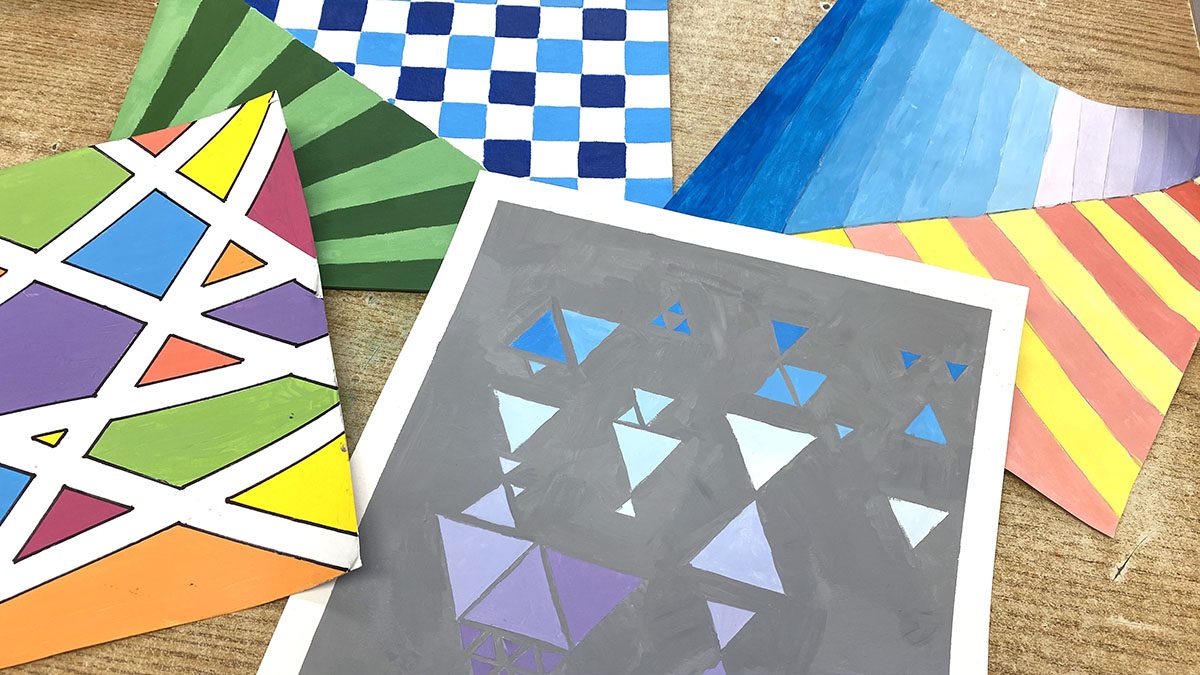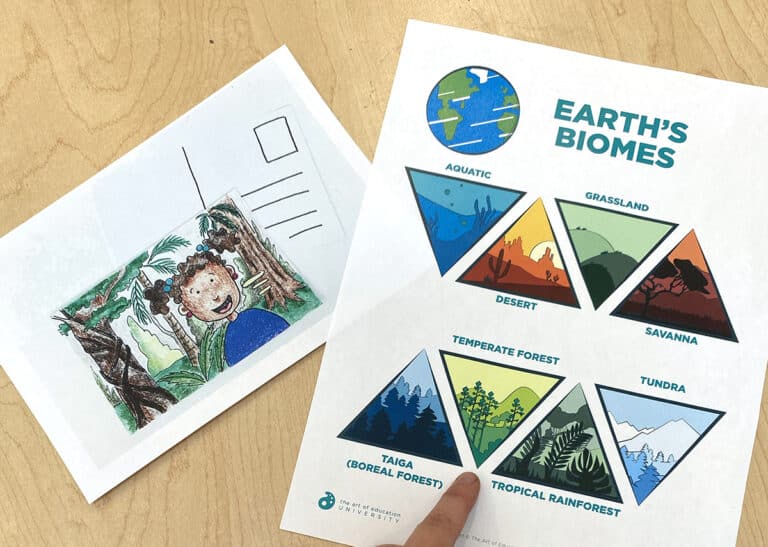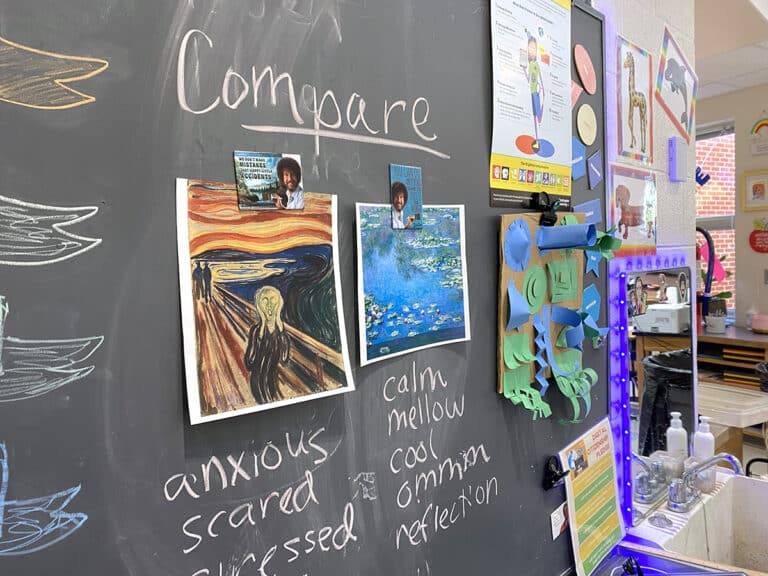Abstract art and color theory are common themes for all grade levels in the art room! The two are often associated with one another but can also be stand-alone concepts. While color mixing is an essential skill, understanding the relationship between colors and how they make us feel is also important.
Let’s dive into these concepts with two color theory exercises inspired by the artist Odili Donald Odita.
Introducing Odili Donald Odita
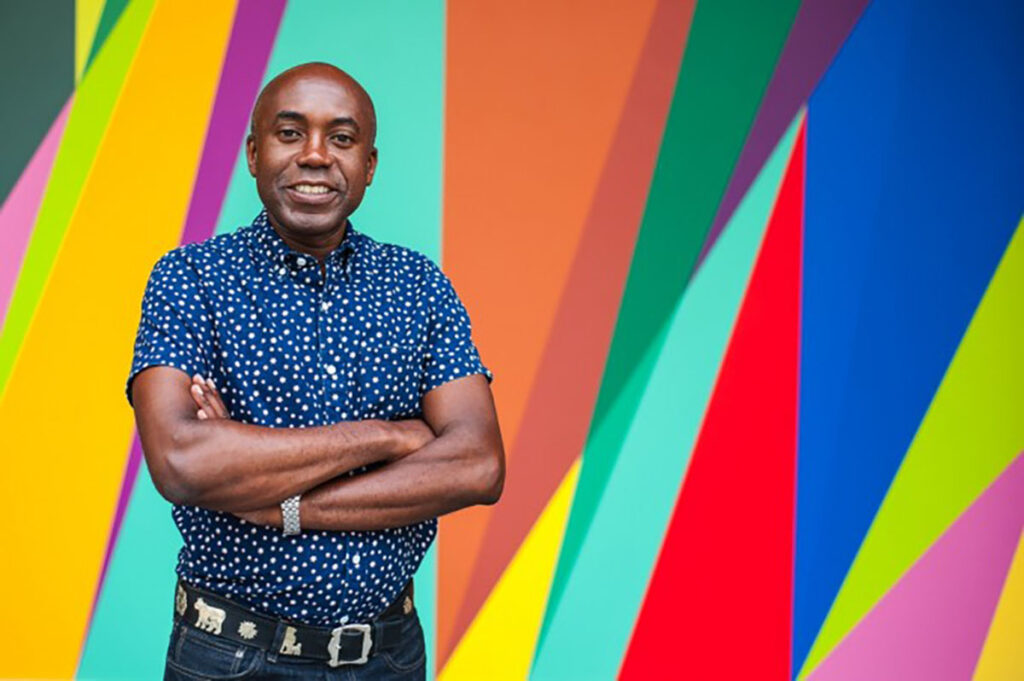
Odilia Donald Odita is a Nigerian-born, Philadelphia-based contemporary artist. At first look, his work appears to consist of bold colors and vertical and horizontal zig-zags. But, there is so much more to it than that! At six months old, Odita’s family left Nigeria and sought refuge in America at the start of the Biafran War. Odita describes growing up in suburban America with a sense of strangeness. He takes this experience and other memories and symbolically incorporates them into his work with color.
In an interview with Bomb magazine, Odita stated he wants people to feel the color—not in a tactile way, but through experience. He describes color as magical and says, “the same color at four inches, or four feet, or at eight feet, can be three different colors because of the context of scale and how much light is entering that physical, material plane.” Odita pushes the idea that color can represent deeper concepts, such as the differences and complexities that exist between people.
Below are two color exercises you can adapt for any grade level to introduce color theory in a fresh and fun way!
Color Exercise 1: Whitescapes
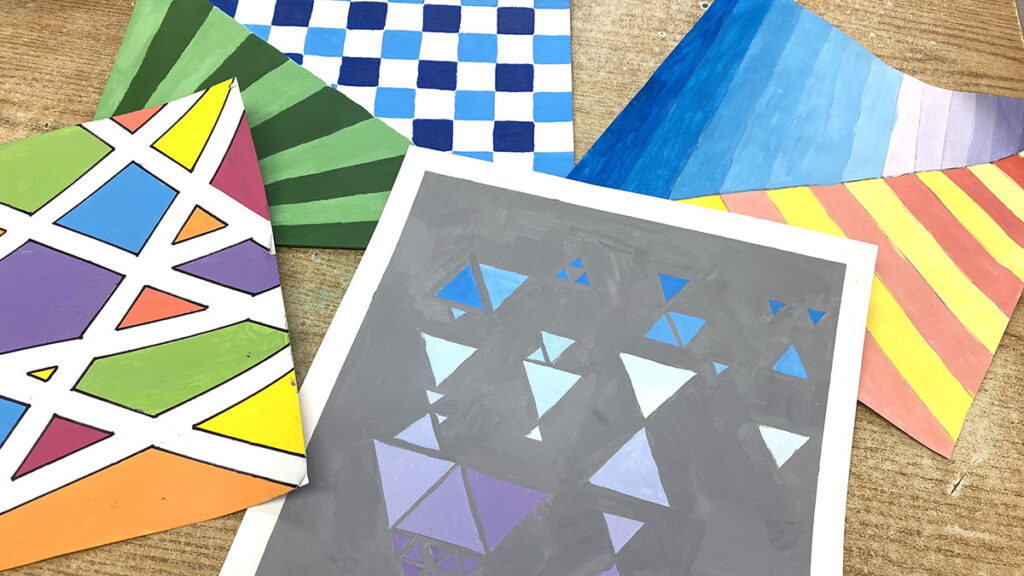
The complexities in which Odili Donald Odita describes the relationship of color in his work might seem too advanced for some of our students. However, we can break it down to invite students to form a more nuanced understanding of color. In collaboration with The Art Assignment, Odita has provided an activity called Whitescapes, which challenges prior knowledge with the color white.
Here is a quick synopsis of the activity:
- Find a white object and place it next to another white object.
- Compare the two objects’ colors and observe how they change.
- Describe the color change. How are they the same? How are they different?
- Change the lighting and observe how the colors change further.
- Identify the colors in the new lighting. Are they still white?
Color Exercise 2: Abstract Paintings
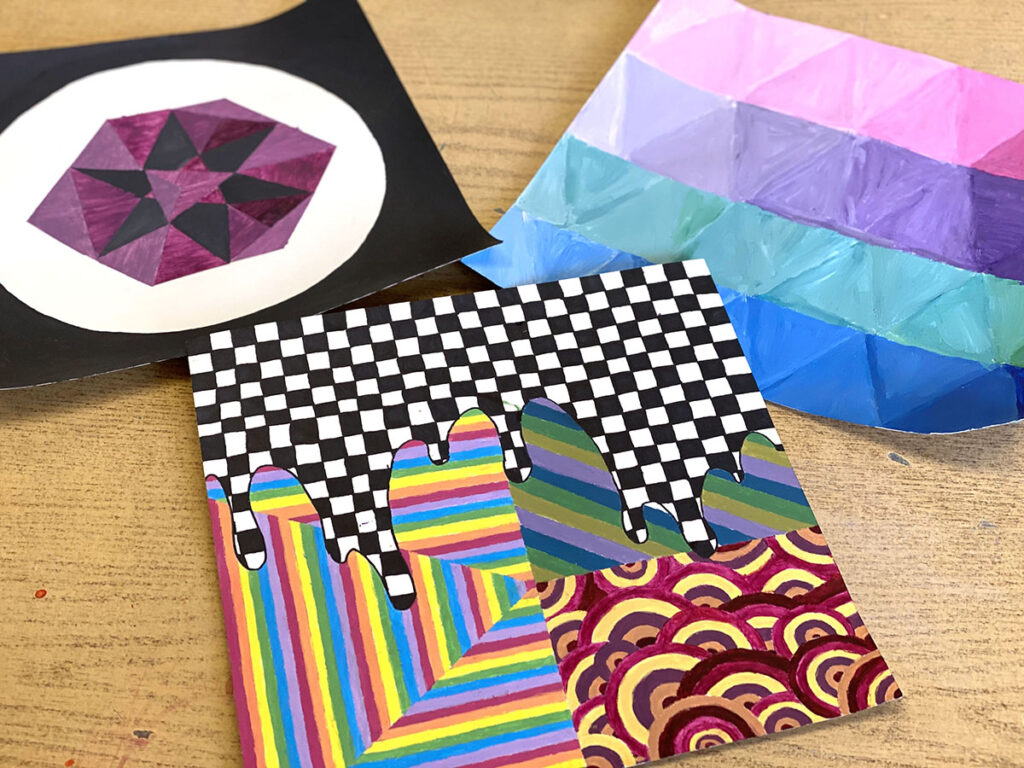
Color is more than mixing paint or identifying colors. If you want to teach color relationships and go beyond the traditional color wheel, challenge your students to create an abstracted work of art with limited constraints that convey emotion. This can be a quick exercise in a sketchbook or refined into a larger, more resolved artwork.
Here are some guidelines:
- Create an abstract painting.
- Pick a color scheme that evokes emotion.
- Colors must be mixed (not straight from a paint bottle).
- Use value somewhere in your painting.
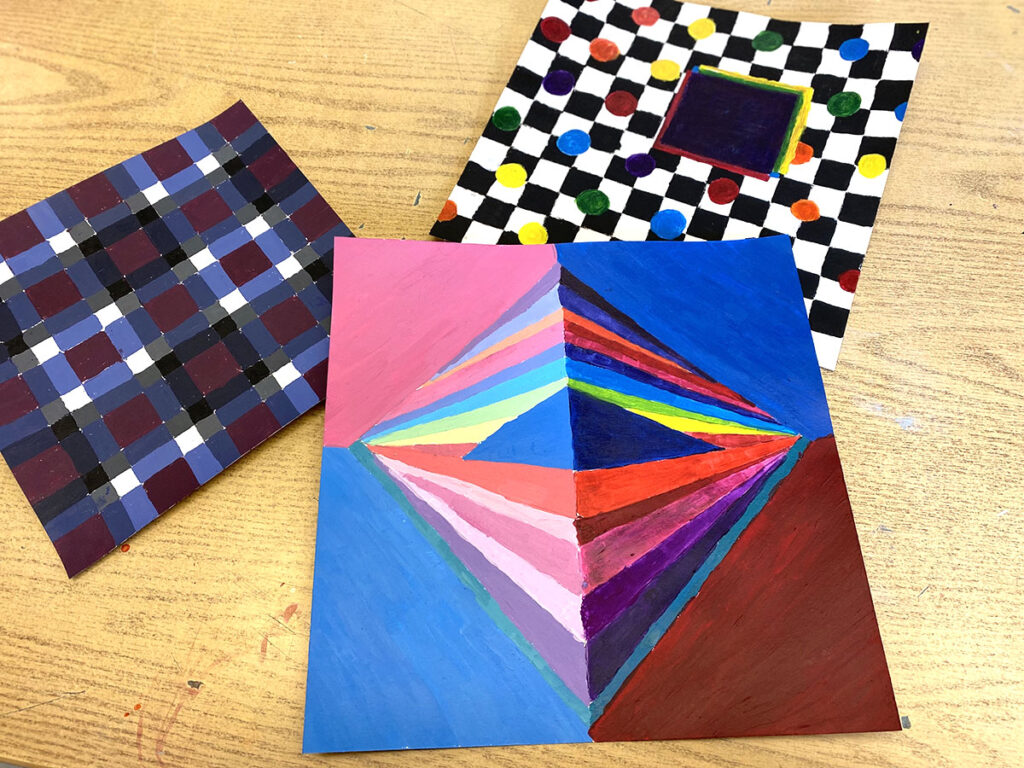
While these guidelines are broad, they provide students with the opportunity to move into higher-level thinking and explore what kind of mood or feeling their work will present.
Other Artists to Explore
Odili Donald Odita is not the only artist who explores geometry, abstraction, and color. Many contemporary artists work with similar concepts that you could incorporate into the activities above.
Check out the following artists:
There is a world of contemporary artists who can inspire us to find new ways to explore abstraction and color with our students. If you have been looking for new ways to introduce these topics, give the two exercises with your classes a try!
Who are your favorite artists who explore color and abstraction?
How do you teach color in ways that go beyond traditional color mixing?
Magazine articles and podcasts are opinions of professional education contributors and do not necessarily represent the position of the Art of Education University (AOEU) or its academic offerings. Contributors use terms in the way they are most often talked about in the scope of their educational experiences.
